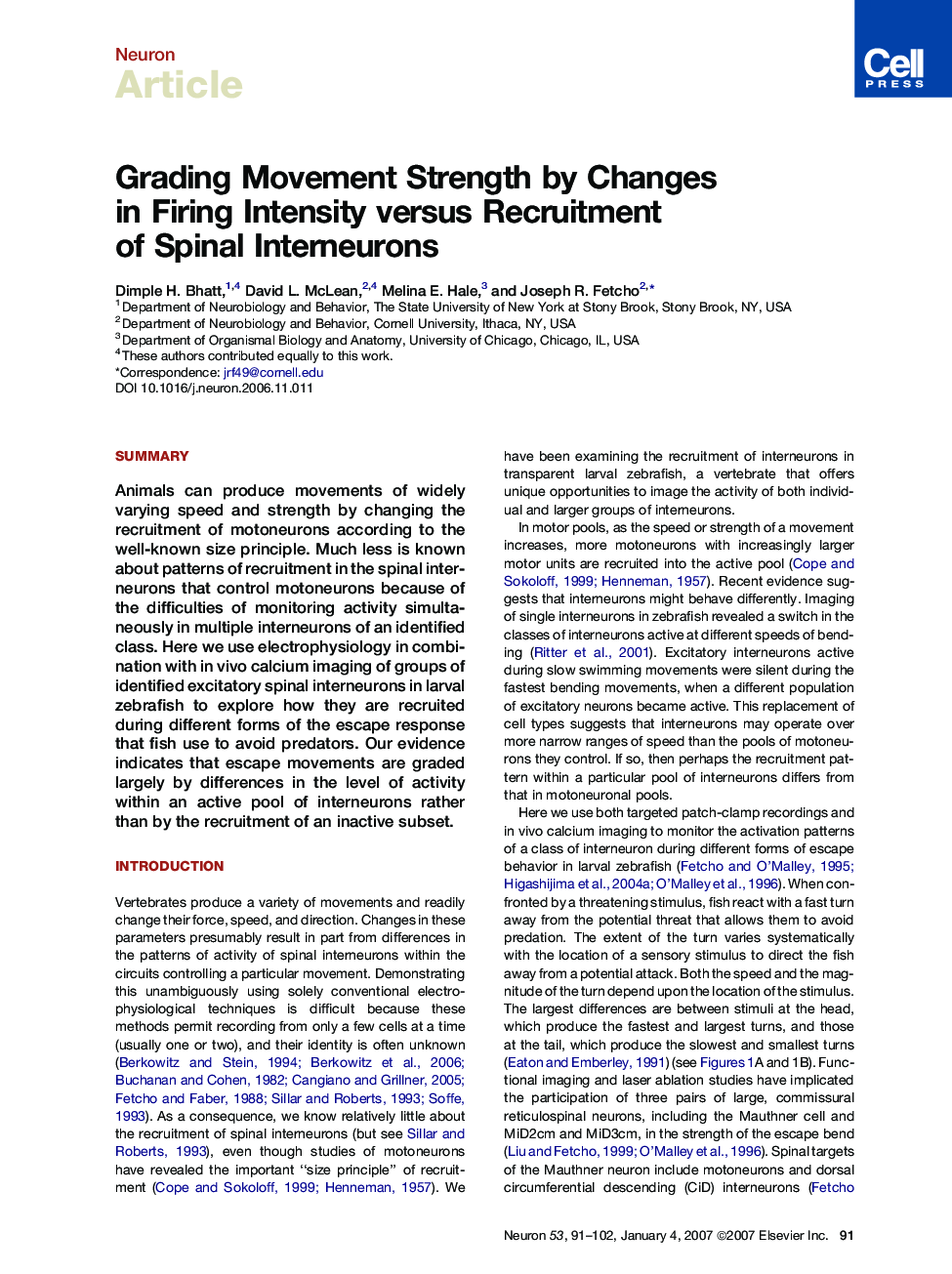| Article ID | Journal | Published Year | Pages | File Type |
|---|---|---|---|---|
| 4323238 | Neuron | 2007 | 12 Pages |
SummaryAnimals can produce movements of widely varying speed and strength by changing the recruitment of motoneurons according to the well-known size principle. Much less is known about patterns of recruitment in the spinal interneurons that control motoneurons because of the difficulties of monitoring activity simultaneously in multiple interneurons of an identified class. Here we use electrophysiology in combination with in vivo calcium imaging of groups of identified excitatory spinal interneurons in larval zebrafish to explore how they are recruited during different forms of the escape response that fish use to avoid predators. Our evidence indicates that escape movements are graded largely by differences in the level of activity within an active pool of interneurons rather than by the recruitment of an inactive subset.
